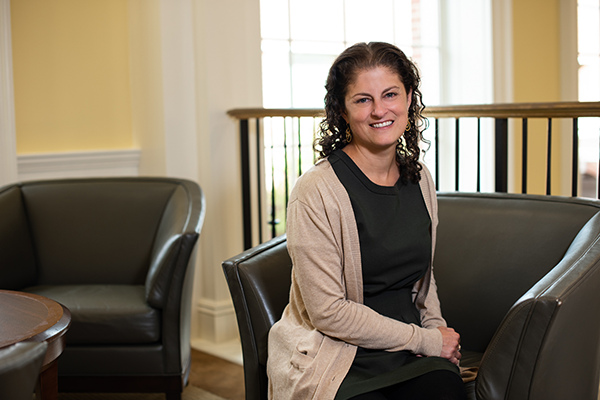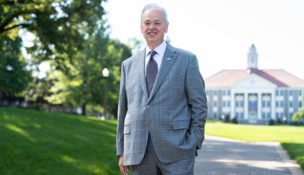Brilliant diversity
Preparing Gen Z for work requires new tech and new attitudes
Tim Thornton //October 30, 2019//
Brilliant diversity
Preparing Gen Z for work requires new tech and new attitudes
Tim Thornton //October 30, 2019//
Students at Northern Virginia Community College aren’t much different than they were when he started teaching 30 years ago, says history professor Charles Errico.
But then again, they are.
“They all tend to be facing enormous obstacles. That has not changed,” Errico says. “What is different is that many of our students are visual learners. Many of them use technology. … They get most of their information from the internet, and so you have to speak their language. You have to use technology to reach them a little more effectively.”
The oldest members of Generation Z will turn 22 this year, putting them firmly in the traditional college-age bracket. Those first Gen Zers were born the same year as Netflix. They were just 10 years old when Steve Jobs introduced the world to the iPhone. They have grown up in a very digital world.
“They’re online all the time,” says Errico, who is chairman of the Virginia Community College System’s Chancellor’s Faculty Advisory Committee. “They’re on their phones all the time … so they’re very comfortable in using the technology.”
Educators in turn have been becoming more adept at using technology to teach these digital natives.
Digital classrooms

Students react to what they see onscreen. Coaches interrupt to evaluate and give advice. The students try again.
“We found it to be really effective at getting them [to perform] better more quickly,” Cohen says. “But it’s also engaging for them in a totally different kind of way. The technology, I think, meets their needs to be able to do things from their living room. There is this kind of desire to be able to work from wherever, to be able to complete assignments and do things from a distance.”
U.Va.’s Curry School has used the simulator for three years, Cohen says, but this is the first year every candidate will take part. When Cohen demonstrated the simulator for introductory classes this year, students “just came alive,” she says. “As soon as the digital classroom came on the screen, they took out their phones. They started taking pictures.”
The simulator also lets students lead virtual parent-teacher conferences. Traditionally, they wouldn’t lead a conference until they’ve become teachers.
The simulator has other advantages, too, according to Cohen: “They’re not practicing on real kids. The analogy we make is flight simulators. People don’t learn to fly in real planes.”
Change is a certainty
Kim Filer, director of Virginia Tech’s Center for Excellence in Teaching and Learning, says pedagogy is evolving all across campuses.
“Most of our faculty have moved away from the stand-and-deliver lecture,” she says. “They spend a lot of time thinking through how do they actually get students to process the information and become active learners, even in a very large lecture hall.”
That’s not just because students are changing. The working world they’re graduating into is changing too, and it’s likely to continue to change throughout those students’ careers.
“We’re really challenging our students to get comfortable with uncertainty,” Filer says, “and understand the world isn’t as linear as it is presented in a book or in a traditional lab report.”
Students not only need to become comfortable with uncertainty; they need to navigate their way through it.
“The bottom line is, we’re training young people for a world that we don’t know what it’s going to look like,” says Thanasis Rikakis. “That’s a critical difference between now and say, 40 years ago. We, of course, need to teach specifics … but we also need to teach our students — we need to give them space to develop their own paths.”
The keys for effectively educating Gen Z, Rikakis says, are three C’s and one S: co-creation (programs partly structured by faculty and partly designed by students); collaboration (working in diverse teams); cross-cutting (working across disciplines and across sectors); and sustainability (focusing on solutions that balance technology, business, people and the planet).
A professor of bioengineering and performing arts at Virginia Tech, Rikakis is also the founding chair of the Calhoun Honors Discovery Program and the Calhoun Center for Higher Education Innovation. The program, made possible through a donation from Tech alum David Calhoun, is experimenting with new ways of teaching, learning and collaborating across 11 disciplines, ranging from business management to computational modeling and data analytics to electrical and computer engineering, and smart and sustainable cities.
It’s important, Rikakis says, to involve business, government and nonprofits in teaching so students can connect their university-gained knowledge to the real world. It’s a world where students will need a different attitude as well as a different set of skills and increased flexibility to succeed.
“It used to be, 30 years ago, if you were a musician or a mechanical engineer, primarily, you would just go ahead and work with other musicians or mechanical engineers,” Rikakis says. “It’s not the case anymore.
We’re saying to our students, if you don’t have the policy knowledge, the humanities knowledge, the arts knowledge in the room, you’re going to make mistakes. You’re going to develop things that have unintended consequences, and they see that from the beginning.”
Next-gen teaching
Students in the Calhoun program have a traditional major, but they learn by working to solve real-world problems in teams of other students, industry partners and faculty. When students realize they need more information to collaborate with members of their team from other disciplines, they can take one-credit study modules. Much of the learning in these modules is done online, but the modules also include weekly in-person meetings with faculty. Students can revisit the modules to learn more about a particular discipline, even after graduation.
“After a while,” Rikakis says, “you can’t even tell what is your disciplinary education, what is your general education, and what is your experiential learning. They’re one thing.”
The structure helps students develop the habits of lifelong learners. It also aims to do more than prepare people for employment.
“If, as a university, all we do is prepare good employees, not only are we failing our students, we’re failing our society,” Rikakis says.
The school’s leaders, he adds, emphasize that “this is not about you making a quick buck or being a good employee. It’s about how to understand this idea of developing the technology, the business, the people and the planet together — and that is a very complex personal and professional development paradigm. You don’t understand those four things together unless you’re developing both personally and professionally.”
The most important outcome, Rikakis says, the main goal, is “graduating a generation that understands the best solutions to complex problems lie in a negotiated space. They don’t lie in binaries. They don’t lie in out-shouting the other person, or shutting down the other person’s difference. They lie in being able to come [into] a complicated space where the majority of the things you’re hearing you’ve not heard before, you’re not comfortable with, and learning to be comfortable with the difference and learning to be comfortable in that space and negotiating something that works for all.
“I think, as a society, we need that to be sustainable. And creating a negotiated space between brilliant but different people is exactly what we’re aiming for.”
Higher education charts
i
















